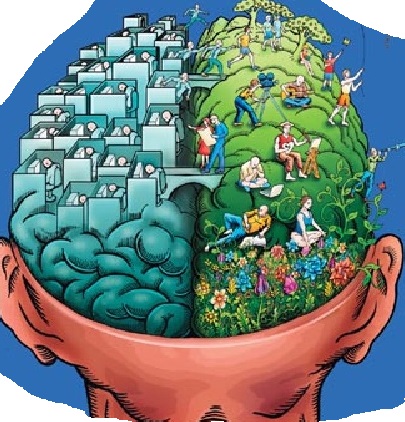
これらの理論の中の第二と第三(の理論)は、私が経験することから私の経験しない何ものかへの推論を必要とする(demand 強く要求する)。そのような推論は、論理的に証明可能なものではありえず、演繹的論理学の外にある原理を受けいれることによってのみ有効にできる(validated by 正当性が認められる)。「哲学の諸問題」(注:邦訳書名は『哲学入門』) 及びそれ以前に私の考えていた全てにおいて、私は物理学に出てくる物質をそのまま受けいれていた。しかし,このことは、物理学と知覚との間に、別の言い方で言えば、精神と物質との間に、不愉快な大きな隔たりを残した。(また)物理学者の(が前提とする)「物質」を捨て去ろうという私の初期の熱意のなかで、ある(与えられた)知覚者が知覚しない仮説的存在(hypothetical entities)を、彼(人間)が知覚する諸要素のみから組み立てられた構成物として示すことができることを望んだ。これは、(ボストンでの)ローウェル講演(連続講義)において提示したその理論(説)の最初の(詳細な)説明(exposition)において、ひとつの可能性として示された(として示した)。この最初の詳しい説明(解説)は、1914年に Scientia 誌(スキエンティア)に発表した「センス・データ(感覚所与)と物理学との関係」と第する論文の中であった。【訳注:みすず書房版の訳書で野田氏は「・・・ひとつの可能性として”暗示”された。この点を初めてはっきり述べたものは・・・」と訳している。ここは素直に「・・・で提示した(提示された)この最初の詳しい説明(解説)は、1914年に Scintia 誌(スキエンティア)に発表した。」と訳すべきではないか。ラッセルは”expositon”という言葉を2回使っており、いることに注意/なお、この論文はその後 Mysticism and Logic, 1918に収録されている。〕 この論文の中で私は次のように言った「もし物理学が検証可能(verifiable)であるべきならば、我々は次の問題に直面する。即ち、物理学はセンス・データ(感覚所与)を物理的対象の関数(functions)として示すが、しかしその検証(verification)は、物理的対象が感覚所与の関数として示されうる場合にのみ可能である。それゆえ、我々は感覚所与(データ)を物理的対象の言葉で与える(説明する)方程式を解かなければならず、それどころか(indtead その代わりに)、物理的対象を感覚所与(データ)の言葉で与える(表現する)方程式にしなければならない」。けれども、間もなく私は、これは実現不可能な企て(programme 計画)であり、物理的対象は現実に経験された諸要素からなる構成物と解釈できないと信ずるようになった。この同じ論文のなかで、その後の方の部分で、二種類の推論を許容すると説明している。即ち、(自分の感覚所与だけでなく)(a)他人の感覚所与(を認めること)(注:自分の感覚所与の延長)、また(b)私が「センシビリア」と呼ぶもの、つまり(感覚所与を)知覚する心がまったく存在しない場所において事物が存在している「現れ」(appelarance)であると私が想定するもの(を認めること)(である)。そしてさらに続けて,これら二種の推論なしにすますことができ、「また、そうして、物理学を独我論的基礎の上に立てることができればよいと思うが、論理的な無駄の無さ(logical economy)よりも人間的愛情(注:他人の存在を認めたいという感情)の方を強くもっている人々は --そういった人が大多数だと思うが-- きっと、独我論を学問的(科学的)に十分なものとしたいという私の欲求には、同感しないであろう」と言っている(書いている)。そういうわけで私は(自分が)経験するデータ(所与)のみから「物質」を構成しようとする企てを断念した。そうして、物理学と知覚とを、調和的に、ひとつの全体に適合させる世界像で満足した(のである)。
Chapter 9 The External World, n.5
The second and third of these theories demand inferences from what I experience to something which I do not experience. Such inferences cannot be logically demonstrative and can only be validated by accepting principles which lie outside deductive logic. In the Problems of Philosophy and in all my previous thinking, I had accepted matter as it appears in physics. But this left an uncomfortable gulf between physics and perception, or, in other language, between mind and matter. In my first enthusiasm on abandoning the‘ matter’ of the physicist, I hoped to be able to exhibit the hypothetical entities that a given percipient does not perceive as structures composed entirely of elements that he does perceive. This was suggested as a possibility in my first exposition of the theory that I advanced in the Lowell Lectures. This first exposition was in a paper called ‘The Relation of Sense-Data to Physics’, published in Scientia in 1914. In this paper I said: ‘If physics is to be verifiable we are faced with the following problem: Physics exhibits sense-data as functions of physical objects, but verification is only possible if physical objects can be exhibited as functions of sense-data. We have therefore to solve the equations giving sense-data in terms of physical objects, so as to make them instead give physical objects in terms of sense-data.’ I soon, however, became persuaded that this is an impossible programme and that physical objects cannot be interpreted as structures composed of elements actually experienced. In this same paper, in a later passage, I explain that I allow myself two sorts of inferences: (a) the sense-data of other people and, (b), what I call ‘sensibilia’, which I suppose to be the appearances that things present in places where there are no minds to perceive them. I go on to say that I should like to be able to dispense with these two kinds of inferences ‘and thus establish physics upon a solipsistic basis; but those — and I fear they are the majority — in whom the human affections are stronger than the desire for logical economy, will, no doubt, not share my desire to render solipsism scientifically satisfactory’. Accordingly, I gave up the attempt to construct ‘matter’ out of experienced data alone, and contented myself with a picture of the world which fitted physics and perception harmoniously into a single whole. Source: My Philosophical Development, chap. 9:1959. More info.:https://russell-j.com/beginner/BR_MPD_09-050.HTM
